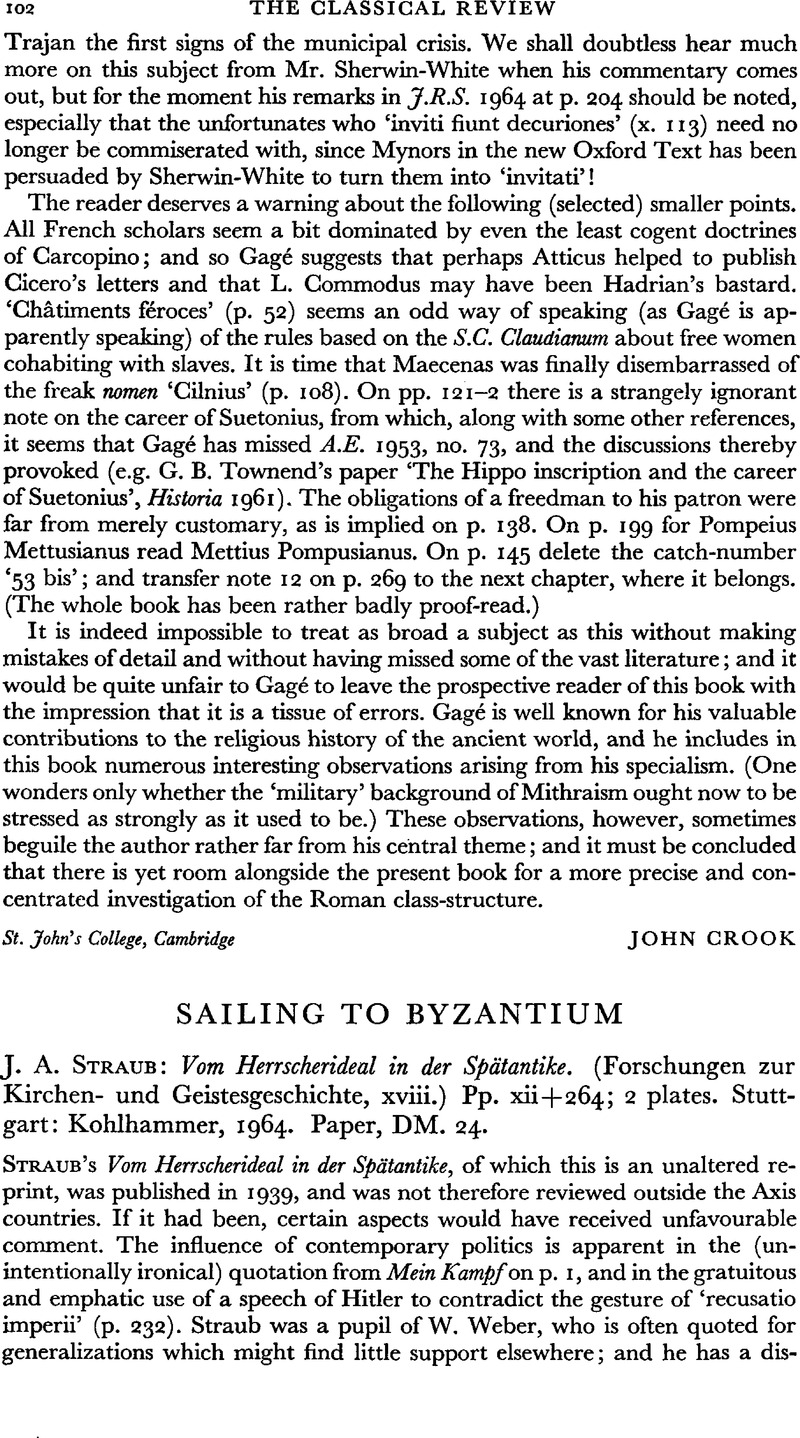No CrossRef data available.
Published online by Cambridge University Press: 27 February 2009

page 103 note 1 See in general: Hohl, E., Gnomon xvii (1941), 478 f.Google Scholar (for mistakes); Previale, L., Emerita xvii (1949), 72 ff.Google Scholar; Stroheker, K. F., Saeculum iii (1952), 654 ff.Google Scholar; Ensslin, W., Hist. Zeit. clxxvii (1954), 449 ff.Google Scholar; Wickert, L., R.E. xxii. 2 (1954), 1998 ff.Google Scholar; Ostrogorsky, G., Gesch. d. Byz. Staates,3 25 n. 2Google Scholar. Much insight into both method and the continuity of tradition can be obtained from the studies on Byzantine preambles: cf. Dölger, F., Hist. Zeit. Clix (1938–1939), 229 ff.Google Scholar; H. Fichtenau, Arenga; H. Wolfram, Splendor Imperii; H. Hunger, Prooimion.
page 104 note 1 Cf. K. M. Setton, Christian Attitude towards the Emperor in the Fourth Century.
page 104 note 2 He is here developing the views of E. Peterson, Monotheismus als politisches Problem; cf. Cranz, F. E., H.T.R. xlv (1952), 47 ff.Google Scholar On N. H. Baynes's view of Eusebius' sources (Byzantine Studies, 168 ff.), cf. Taeger, F., Saeculum vii (1956), 186 ff.Google Scholar; Charisma ii. 616 ff., 681 ff. For a general Eusebius bibliography see B. Altaner, Patrology 5 (Eng. trans.), 264 ff.; Quasten, J., Patrology iii. 319 ff.Google Scholar
page 105 note 1 Themistius: V. Valdenberg, Byzantion i (1924), 557 ff., and the studies of G. Downey.
page 105 note 2 Julian: bibliography in J. Kabiersch, Philanthropia bei dem Kaiser Julian 95 f.